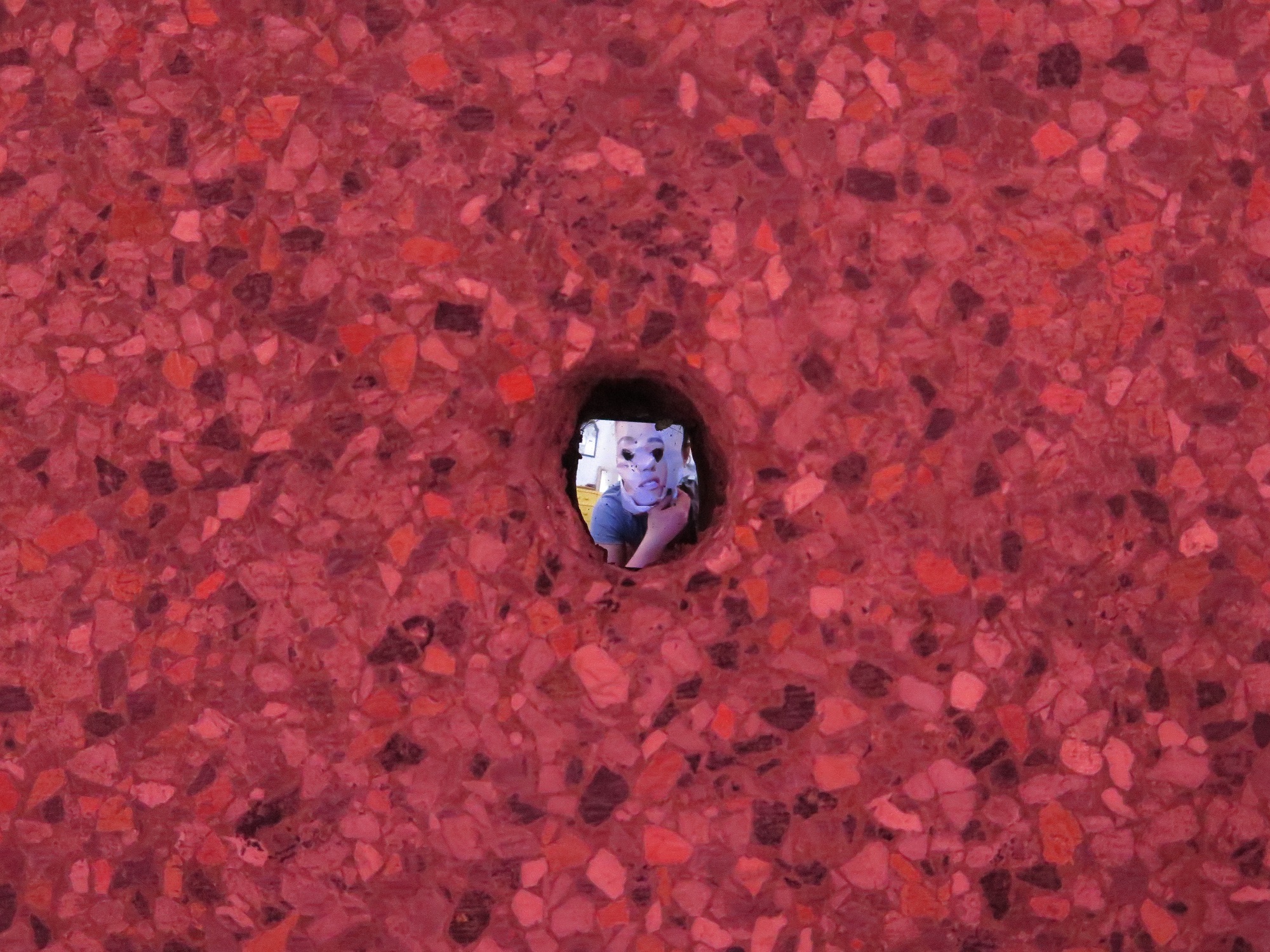New exhibition at Espace Projet brings the audience into the artwork
Like an actor spending time in a psychiatric hospital to authentically prepare for their latest role, people immerse themselves in unfamiliar cultures in an attempt to add richness and complexity to their character.
In her latest exhibition, I, interdisciplinary performance artist Nadège Grebmeier Forget creates a performance space which brings the viewer into sharp focus through its minimalism and austerity. It would be wrong to reveal too much about the exhibition, as the description would disturb the natural response of any reader who may decide to participate in Forget’s work. However, it seems appropriate to give a sense of the response the artist might be trying to provoke from the audience.
The pale, pink-lighted space offers the viewer’s wandering eye so little to rest upon that they are inevitably drawn to the other people standing in the room. In this way, the other viewers become part of the exhibition.
However, in Forget’s work, the viewer is encouraged into a state of communal reflection in which they learn from fellow art lovers through their behaviour. According to the artists’ statement, in doing so, Forget hopes to create an inclusive space where personal revelations may be shared verbally, and perhaps even telepathically.
I is an ambitious project which puts our age of digital surveillance and the commodification of the self under a microscope. It makes the viewer reflect seriously on not only why, but how they consume culture. This exhibition brings us closer to ourselves and others by encouraging the scrutiny of those occupying the space.
Whether what we absorb finds its way into the very sinews of our being, or merely flits temporarily through some scene in the performance of our lives, I suggests human behaviour is comprised of a constantly shifting outer layer of knowledge, and a less receptive, yet more faithful core of wisdom. I challenges the viewer to be aware of how this process unfolds in the subjective and objective gestures of the audience.
When we are drawing on the outer layer to inform our actions and interactions, we are performing. Whereas when conduct comes from our inner being, we are expressing ourselves.
If there is a problem with the exhibition, it may lie in the fact that it is almost too minimal. Intellectual fire requires a spark to ignite, but I wanted the viewer to conjure a flame from nowhere. So a vague sense of mystification was perhaps the most palpable reaction in the exhibition space.
Nonetheless, this sense of awkwardness is a genuine human reaction from the inner core, and observing how people attempt to engage and be enthusiastic about nothing was an interesting and informative experience.
I runs at Espace Projet until April 22. The exhibition space is open Wednesday through Saturday from 11 a.m. to 6 p.m. Admission to the exhibition is free. There will be a special presentation from the artist on April 7 from 5p.m. to 7 p.m.
